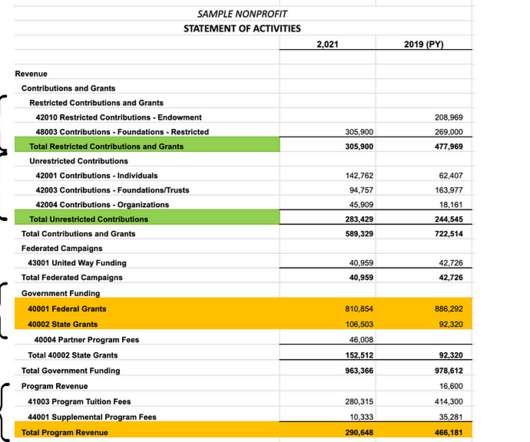Nonprofit Accounting Basics for Founders, Board Members & Executives
The Charity CFO
JANUARY 17, 2022
The basic accounting principles for nonprofit organizations are the same as accounting for for-profit companies. . So let’s start with the basics, and later we’ll dig into some of the things that make nonprofit accounting unique. . However, it can also be cash from sales of products, courses, or subscriptions.















Let's personalize your content